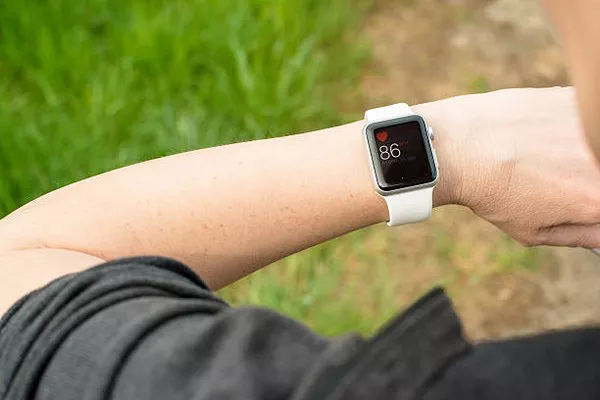Sleep apnea is a serious sleep disorder where breathing repeatedly stops and starts during sleep. This condition can lead to various health problems if not managed properly. With the advancement of technology, many people wonder if their Apple Watch can detect sleep apnea. In this article, we will delve into the capabilities of Apple Watch regarding sleep apnea detection, how it works, and what you should know.
Understanding Sleep Apnea
What is Sleep Apnea?
Sleep apnea is characterized by pauses in breathing or shallow breathing during sleep. These interruptions can last for a few seconds to minutes and can occur many times throughout the night. The most common type is obstructive sleep apnea (OSA), where the throat muscles relax excessively during sleep, blocking the airway.
Symptoms of Sleep Apnea
Common symptoms of sleep apnea include:
- Loud snoring
- Excessive daytime sleepiness
- Difficulty staying asleep
- Morning headaches
- Dry mouth or sore throat upon waking
- Difficulty concentrating
Apple Watch and Sleep Tracking
Apple Watch Capabilities
The Apple Watch offers various health and fitness tracking features, including heart rate monitoring, activity tracking, and sleep tracking. Recent models have enhanced these features to provide more comprehensive health insights.
Sleep Tracking Features
Sleep Monitoring: The Apple Watch tracks your sleep duration and quality. It uses a combination of accelerometer data and heart rate monitoring to assess your sleep patterns.
Sleep Stages: Starting with watchOS 9, the Apple Watch can monitor different sleep stages, including REM, Core, and Deep sleep.
Can Apple Watch Detect Sleep Apnea?
Current Technology Limitations
As of now, Apple Watch does not have a dedicated feature to diagnose or detect sleep apnea. The primary reasons are:
Lack of Direct Measurement: Sleep apnea diagnosis typically requires the measurement of respiratory patterns, oxygen levels, and airflow. Apple Watch does not currently measure these parameters directly.
Absence of Specific Algorithms: Apple Watch’s sleep tracking algorithms are not designed to identify the patterns associated with sleep apnea.
Indirect Indicators
While Apple Watch cannot diagnose sleep apnea, it can provide indirect indicators that might suggest the need for further evaluation:
Heart Rate Variability (HRV): Changes in HRV might indicate potential issues with sleep quality and overall health, which could be associated with sleep disorders.
Sleep Patterns: Unusual sleep patterns or frequent disturbances detected by the watch could prompt users to seek medical advice.
Diagnostic Tools for Sleep Apnea
Home Sleep Apnea Testing (HSAT)
For those who suspect they might have sleep apnea, home sleep apnea testing is a more accurate method. These tests typically measure:
- Airflow: Monitoring airflow to detect interruptions.
- Oxygen Levels: Measuring blood oxygen levels to identify drops associated with apneas.
- Heart Rate and Respiratory Effort: Evaluating heart rate and effort to breathe.
Polysomnography (PSG)
Polysomnography is conducted in a sleep clinic and provides a comprehensive analysis of sleep stages, brain waves, eye movements, muscle activity, heart rate, and breathing. This test is considered the gold standard for diagnosing sleep apnea.
See Also: What Is The Best Apple Watch For The Money
Apple Watch and Sleep Health
Apple Watch’s Role in Sleep Health Monitoring
Health App Integration: Apple Watch integrates with the Health app on iOS, where it collects and presents data related to sleep and heart rate.
Third-Party Apps: Several third-party apps offer enhanced sleep tracking features and can provide additional insights into sleep quality and potential issues.
Future Prospects
Apple is continuously improving its health and wellness features. Future updates and models may include more advanced sensors and algorithms capable of detecting conditions like sleep apnea.
What to Do If You Suspect Sleep Apnea
Consult a Healthcare Professional
If you have symptoms of sleep apnea, it’s crucial to consult a healthcare professional. They can recommend appropriate testing and treatment options.
Lifestyle Changes and Monitoring
In addition to professional evaluation, consider monitoring your sleep health and making lifestyle changes that can improve sleep quality:
- Weight Management: Excess weight can exacerbate sleep apnea.
- Sleep Position: Sleeping on your side may reduce symptoms.
- Avoid Alcohol and Sedatives: These can relax throat muscles and worsen sleep apnea.
Conclusion
While the Apple Watch offers robust sleep tracking and health monitoring features, it does not have the capability to directly detect or diagnose sleep apnea. Its current technology focuses on general sleep and heart rate monitoring rather than specific respiratory patterns associated with sleep apnea. If you suspect you have sleep apnea, consult a healthcare professional for proper diagnosis and treatment. Keep an eye on future advancements in wearable technology, as they may offer new solutions for monitoring and managing sleep disorders.

